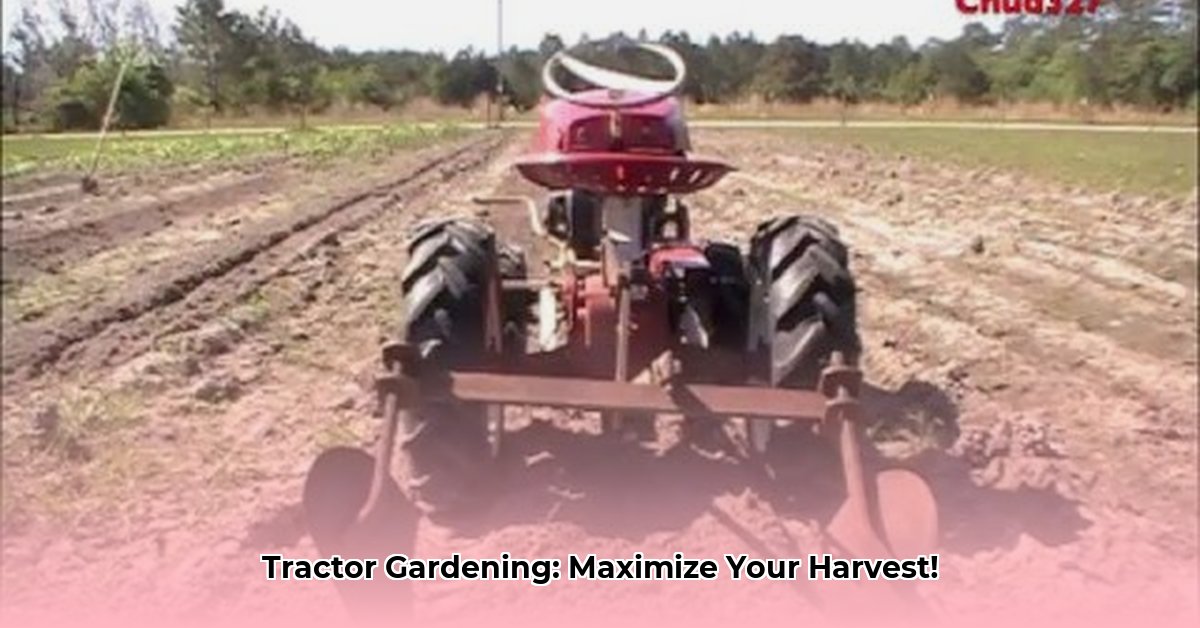
Creating neat rows in your garden is crucial for maximizing yields and simplifying planting, weeding, and harvesting. A tractor significantly speeds up this process, but selecting the right attachment is key. This guide compares two popular options – hiller attachments and middle busters – providing step-by-step instructions and crucial considerations for soil health and long-term sustainability. For more information on tractor attachments, check out these helpful resources.
Choosing the Right Implement: Hiller Attachment vs. Middle Buster
Two primary tractor attachments facilitate row creation: hiller attachments and middle busters. Each offers distinct advantages and disadvantages impacting soil health, cost, and suitability for various crops and soil types. Understanding these differences is crucial for maximizing efficiency and long-term soil productivity. What's the best approach for your garden?
| Feature | Hiller Attachment | Middle Buster |
|---|---|---|
| Row Type | Raised rows (elevated planting beds) | In-ground rows (furrows) |
| Soil Disturbance | Minimal; primarily surface soil manipulation | More significant; deeper soil tillage |
| Cost | Generally more expensive | Typically less expensive |
| Ideal Soil Type | Well-drained soils; avoids waterlogged conditions | Adaptable to various soil types, including clay |
| Best Crops | Many vegetables, especially those requiring drainage | Root vegetables (potatoes, carrots) and other crops needing deep root systems |
| Soil Compaction | Lower risk | Higher risk with overuse; regular soil testing advised |
| Ease of Use | Often considered easier for beginners | May require more experience and skill |
Hiller Attachments: These create raised rows, ideal for crops needing excellent drainage to prevent root rot. The elevated beds promote faster soil warming in spring.
Middle Busters: These form furrows directly in the ground, perfect for root crops allowing deep root development. However, repeated use can compact the soil, potentially hindering growth. Don't just plow – plan your plowing!
Preparing for Row Creation: Essential Pre-Work
Before starting, prepare your garden meticulously to ensure efficient and safe row creation. Think of this as laying a strong foundation for a successful harvest.
Field Clearing: Remove all rocks, debris, and other obstacles that could damage your equipment. A clean field is a safe field.
Ground Leveling: Ensure a relatively flat surface for even row creation and stable tractor operation. Uneven terrain risks accidents and inconsistent row depth.
Compatibility Check: Verify your tractor's horsepower meets the requirements of your chosen attachment. This prevents equipment damage and ensures safety. Consult your tractor's manual and the attachment's instructions.
Safety Precautions: Wear appropriate safety gear, including eye protection and hearing protection. Review your tractor's safety manual thoroughly before starting. Safety is paramount. Is your safety gear up to par?
Using a Hiller Attachment: A Step-by-Step Guide
Secure Attachment: Carefully attach the hiller following the manufacturer's instructions precisely. Double-check all connections for security.
Setting Adjustments: Adjust the hiller’s depth and width to create rows of your desired dimensions. Experiment with a test row first.
Controlled Operation: Drive the tractor slowly and steadily. Rushing leads to uneven rows and potential damage. Precision over speed.
Using a Middle Buster: Creating In-Ground Rows
Secure Attachment: Attach the middle buster carefully, following the manufacturer's instructions meticulously. Proper attachment is vital for safety and efficient operation.
Depth Adjustment: Set the plow's depth based on your soil type and the specific crops you are planting. Clay soils require different settings than sandy soils.
Consistent Driving: Maintain a consistent speed and smooth driving pattern. Uneven driving results in uneven rows.
Soil Health Considerations: Long-Term Impacts
Your row creation method profoundly impacts long-term soil health. Middle busters, while efficient, can compact soil if overused. This impairs drainage and root growth. Hiller attachments usually improve aeration and drainage, promoting healthier soil over time.
Regular soil testing is essential to monitor its health and adjust your practices accordingly. Consult your local agricultural extension office for guidance on soil testing and management.
Maintenance and Safety: Protecting Your Investment
Regular maintenance is crucial for your tractor and attachments’ longevity. Clean them after each use, lubricate moving parts, and promptly address any damage. Remember, a well-maintained machine is a safe machine.
Prioritize safety always! Never operate machinery when fatigued or under the influence of substances that impair judgment. Regular inspections and prompt maintenance are non-negotiable aspects of safe and efficient farming.
Conclusion: Choosing the Best Approach for Your Needs
Choosing between a hiller and a middle buster depends on your specific needs, soil type, crops, and budget. Both offer advantages; the key is understanding their impacts on soil health and selecting the approach best suited to your unique agricultural context. Proper technique and diligent maintenance ensure efficient row creation and promote a thriving garden for years to come.